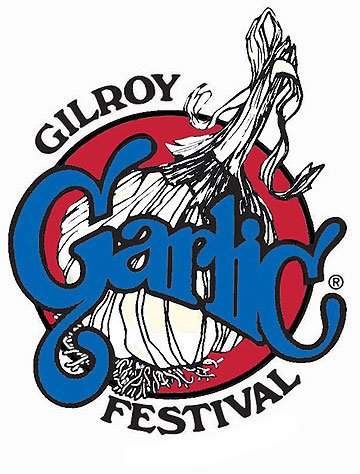Time often dulls a reputation, and in recent years, a growing
chorus of outsiders have started questioning Gilroy’s standing as
the undisputed Garlic Capital of the World.
Gilroy – Time often dulls a reputation, and in recent years, a growing chorus of outsiders have started questioning Gilroy’s standing as the undisputed Garlic Capital of the World.
After all, they say, China has surpassed Gilroy and its home state as the leading supplier of America’s garlic. It even makes up a sizable portion of the stinking herb packed into meals at the city’s signature event, the annual Gilroy Garlic Festival.
But even if garlic fields have started to vanish from Gilroy’s environs, the city’s reputation as the world’s Garlic Capital remains safe for years to come, say those intimately involved with the event.
“What does it mean to be the garlic capital?” said Judy Lazarus, the volunteer president of the 29th festival starting July 27.
“I’ve lived here 20 years, and when we put on this kind of festival, where everything’s based on garlic and you can smell it in the air, where people can enjoy garlic in the food and watch it being cooked – that’s what it means to me,” Lazarus said. “Whether it’s all grown here anymore doesn’t matter as much. That might have been what it was about before, but for me, it’s all about celebrating garlic and our love of it.”
Don Christopher, owner of famed garlic grower Christopher Ranch and a founding father of the event, has spent decades growing garlic and other crops in Gilroy and the San Joaquin Valley. The 1,200 acres he farmed around Gilroy in the late 1970s, when the festival started, has shrunk to just 40 acres (plus 60 in San Juan Bautista). Cheap labor and shipping costs have helped Chinese garlic dominate the U.S. market, Christopher said, though Gilroy still produces about 4 million pounds of the bulb each year. And our overseas competitor certainly doesn’t stack up when it comes to quality, Christopher said.
“We have more solids in our garlic and less water in comparison,” he explained. “When you put some garlic in a steak and barbecue it, the difference is very noticeable. The chefs in the U.S. have found it out and they’re using our garlic.”
The history of the event that put Gilroy on the map dates back to 1978, when former Gavilan Community College president Rudy Melone noticed a newspaper advertisement for a garlic festival in Arleux, France.
The ad called Arleux the Garlic Capital of the World, but Melone had his doubts given the number of garlic fields around Gilroy at the time. So Melone banded together with Christopher and Val Filice, another former garlic grower, and began researching a similar event for Gilroy. He even wrote to the mayor of Arleux to find out how they ran their festival.
In 1979, the first year of the Gilroy festival, the organizers predicted the event would draw 5,000 visitors. They were amazed when 15,000 turned out for the event. By the fourth year, the festival broke the 100,000 mark and has continued to draw similar crowds ever since.
Years of media exposure have helped cement the city’s status as the undisputed Garlic Capital of the World. In addition to widespread Bay Area media coverage, the festival cooking contest is broadcast on the Food Channel before millions of viewers across the country.
And though the city may no longer be the top producer of garlic, it remains one of the world’s largest processors. Each summer, the familiar scent of garlic wafts across the region from the ConAgra Foods plant off Pacheco Pass Highway, ensuring that the thousands who drive past equate the city with the stinking bulb.
“Even if there are other places in the world that produce more garlic, I think the Garlic Festival helps us maintain that reputation,” said Brian Bowe, director of the nonprofit Gilroy Garlic Festival Association.
And the heart of the event that gave the city its international identity are the countless citizens who give back to the community, year after year.
The festival relies on more than 4,000 volunteers to prepare food, organize entertainment, pick up trash and direct traffic. The money earned by those volunteers helps sustain scores of local charities.
“I think that we have developed the perfect volunteer spirit,” Bowe said, “where the community rallies behind the festival, gets involved and benefits from the festival in a unique way that really is the heart and soul of this event.”















